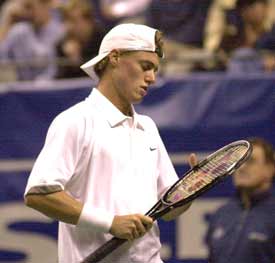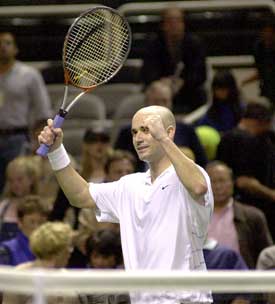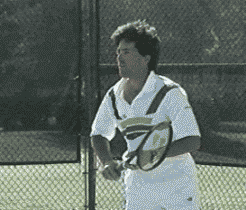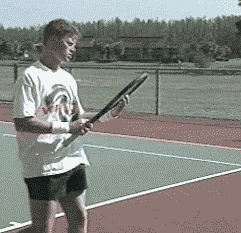The <% ns_puts [mkm_getnavbar] %>
Mental Toughness Training:
The 16 Second Cure Part 1
|
Think about your last match. How did you spend most of the time?
Hitting forehands, backhands, playing serve and volley? Actually, for the
majority of the time, you weren't hitting balls at all. Only about 20% to
30% of the match time is spent in actual play. The rest of the time is
between points and game changeovers.
You may have played for years and never thought about how you spend the
majority of your time on the court. Yet, if we were to identify the single
most important factor in developing mental toughness, it would be how a
player uses these intervals between points and games.
You may never serve like Pete Sampras, run like Lleyton Hewitt or hit
forehands like Andre Agassi, but there is one thing each and every player
can learn to do exactly as well as the top players in the world, and that
is to use the between point time to become mentally tough.
When we study players, it is no coincidence that they behave in very
specific ways between points. And that is the behavior we call the four
stages, or the 16-Second Cure. And it is the key to consistent,
competitive performance.
|
Our goal in the training process is to achieve and sustain our own Ideal Performance State (see Part 1). The four stages are a proven technique to help you attain this goal and a technique modeled by the greatest players in the game.
For many players, the stages are truly a 16-Second Cure for on court
emotional problems. Practicing them will help you develop the ability to
fuel your performance from your positive emotions, and to stay emotionally
positive in the adversity that players often encounter in tough match
play.
Now, what do pro players do to stay mentally tough between points? First,
no matter how the point ends, they stay positive physically. Your physical
posture is closely related to your internal emotional climate. By staying
positive with their physical bodies, the great players stay positive
emotionally.
Stage 1: Positive Physical Response
Watch what happens after a pro point. Whether the player has won or lost the point, hit a winner or made an unforced error, the responses are very similar. The player will make a quick decisive move with his body the instant the point ends.
|
If he has made a great shot, he may give that physical expression, pumping himself up, or he may physically acknowledge a good shot by his opponent.
If he has made an error, he may physically rehearse the correction. He
will then turn and walk away from the error, as if to say, no problem. The
shoulders are back. The racquet usually goes to the non-dominant hand. The
arms are extended and hanging freely. The head is up, the chin level with
the ground. The eyes are forward and down.
No matter what he may be feeling, the player simply does not allow himself
to project negative emotion. This is Stage One and is called the positive
physical response. It lasts from 3 to 5 seconds seconds.
Stage 2: Relaxation
|
|
Stage 2 is relaxation. The goal is to recover physically and emotionally from the point.
The player walks across the baseline. He maintains precise eye control, typically focusing on the strings of his racquet. He breathes deeply and evenly and attempts to drop his heart rate to an optimal level. During this stage, the player should avoid conscious thought beyond simple phrases such as “relax, calm down, it's okay,” and focus primarily on his breathing.
If necessary, he walks back and forth behind the baseline until his equilibrium is re-established.
Stage Two takes from 6 to 15 seconds, depending upon how stressful the previous point was or how important the next point might be.
Stage 3: Preparation
Stage Three is preparation. Preparation begins as the player moves into position to play, either to serve or return. Frequently, the player signals the beginning of this stage by looking up to the opponent's side of the court, making a positive physical statement with his body, as if to say, “I'm going to win this point.”
|
This is the time to decide how to play the next point. Where shall I serve? Should I serve and volley? Is there a particular strategic pattern I want to follow?
For example, hitting to the opponent's weaker side or approaching the net on the first short ball. If it is an important point, the player may remind himself to play aggressively. He may remind himself to stay positive and keep fighting.
If
he is having a technical problem with a particular stroke, he can
visualize the correct execution. Or, he may remind himself to focus on
something simpler such as "only the ball."
Stage Three is the time players manage the strategic and emotional
direction of their match play. With practice, a player learns exactly what
preparation he needs in a given situation or against a given opponent. It
should take between 3 and 5 seconds to complete this stage.
Stage 4: Ritual
|
Stage Four is the ritual stage. This is the final stage before play, designed to keep the player relaxed and to deepen concentration. If you watch pro players, you will see that they follow precise individual rituals and that they rarely deviate from them, even over the course of a five set match.
Rituals are an oasis of comfort in the swirling uncertainty of match play. On the serve, rituals include several ball bounces, followed by a pause, before the start of the motion. This keeps the player from rushing the serve.
On the return, it usually means moving the feet up and down with quick steps or rhythmic swaying back and forth with the weight forward. Completing the ritual stage takes an additional 5 to 8 seconds.
The total time to complete all four stages is a minimum of 16 seconds, up to the full 25 seconds allowed between points. The exact length depends upon the situation and your own internal rhythms.
|
|
|
In a TennisONE article entitled the 8 Greatest Myths of Sports Psychology, Dr. Roland Carlstedt challenged the validity and the effectiveness of the 16 Second Cure. Click here to read my response and Roland's original article. |
In pro tennis, practicing the stages is a matter of routine. Every pro develops his own pacing and personal rituals. For the average player, it can seem like a radical departure. With practice however, the 4 Stages will become second nature, and the foundation for developing the same kind of positive emotional motivation we see in great champions.
In Part 3 we’ll explain more about how to incorporate the 4 Stages into your play. And we’ll look at the unique between point patterns and rituals some of the top players use to stay mentally tough amid the emotional storms of professional competitive tennis.
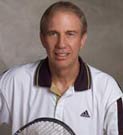 Dr.
James Loehr, CEO of LGE Performance Systems, is recognized as a world
pioneer in the field of sports psychology and mental toughness training.
Dr.
James Loehr, CEO of LGE Performance Systems, is recognized as a world
pioneer in the field of sports psychology and mental toughness training.
He has worked with dozens of elite athletes in Olympic and professional sports, including Grand Slam champions such as Martina Navritilova and Jim Courier.
For more information about training packages for tennis or for the corporate athlete, click here: http://www.corporateathlete.com/index.html
 Pro
Secrets of Mental Toughness
Pro
Secrets of Mental Toughness
In Pro Secrets of Mental Toughness, Jim Loehr, the world’s leading sports psychologist, trains you to develop the same mental skills used by the world’s top professional players.
Overcome choking, play your best tennis under pressure, become the player you really want to be!
Click here for more info
Last Updated 7/15/02. To contact us, please email to: webmaster@tennisone.com
TennisONE is a registered trademark of TennisONE and SportsWeb ONE; Copyright 1995. All rights reserved.


